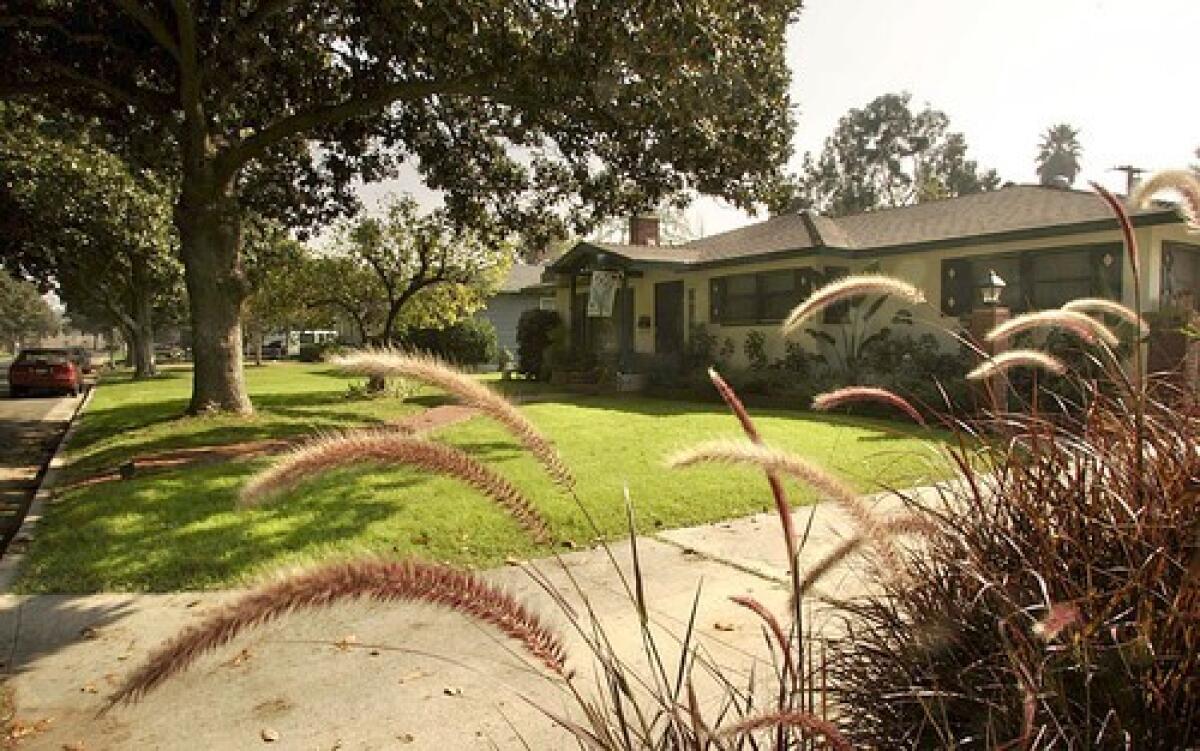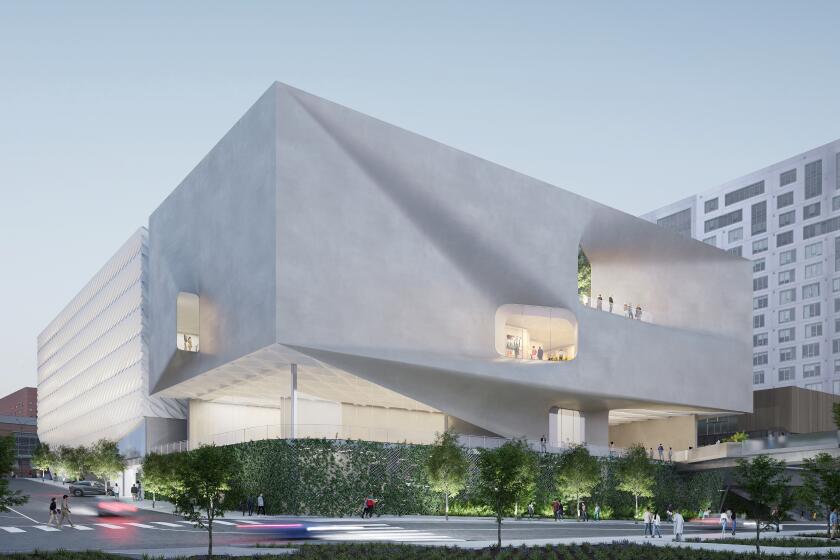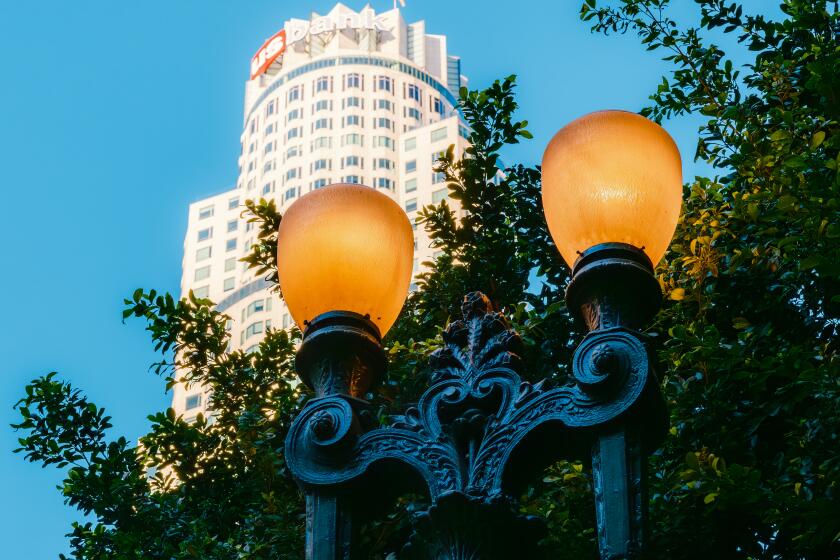Plaza revival breathes new life into Magnolia Center

Sometimes, things just come full circle — even shopping centers. The Plaza in Riverside, which contributed to the demise of downtown shops in the late ‘50s, found itself moribund by the ‘90s as fickle shoppers gravitated to the newer malls. But it reopened this year in a village format. And with it came new life for the city’s Magnolia Center neighborhood.
Beginnings
In the beginning, it was oranges. Seedless navels put Riverside on the map in the last decades of the 19th century. But as demand for housing grew, the citrus migrated east to the Imperial Valley and north to the San Joaquin Valley. Today, Magnolia Center is mostly homes bordered by retail businesses and a revitalized shopping mall.
What’s it about?
Magnolia Center, an area of 2.5 square miles north and west of the Riverside Freeway (91) and south of Jurupa Avenue, is an area of quiet, tree-shaded streets that real estate agents almost invariably describe as “well-maintained.”
Much of the housing predates World War II, especially the areas west of Magnolia Avenue, Riverside’s main artery. And it’s not uncommon on some streets to find a century-old Victorian alongside a 1920s bungalow.
But the buzz came when the Plaza mall — once a pillar — reopened in a pedestrian-friendly village format, with open-air streets and clusters of shops and restaurants and a multiplex cinema. Chains such as Borders, California Pizza Kitchen, Trader Joe’s and Panera Bread, along with upscale restaurants including Citrus City Grille and Ooka, are pumping new life into the Plaza.
Insider’s view
One resident said the reborn mall has reduced her driving time.
“I find that I hardly ever leave the area now,” said Patricia Barnes, a Nelson Street resident whose workplace is also nearby. “I spend a great deal of time at the Plaza and am thrilled with having so much so near — but it does have some disadvantages,” the main one being more traffic.
Barnes said she also welcomes the infusion of younger families to the area as original owners become empty nesters and move elsewhere.
Housing stock
Housing prices in Riverside have risen along with the rest of the Southland, but it’s still possible to buy a family-sized house for $350,000 to $400,000 in the Magnolia Center area.
“We’re drifting toward a buyers’ market,” said Patty Pond, an agent with Realty Executives. “Values haven’t come down, but they’ve leveled out.” Whereas in the past listings have sold within a week, now it’s taking 30 to 40 days, Pond said.
Buyers are still paying more than the asking prices for some homes, she said.
A three-bedroom, one-bath house of 1,200 square feet next to a gas station sold in September for $11,000 over the $364,000 asking price.
Most new housing in Riverside is going up on hills to the east, extending toward March Air Reserve Base. But there are some infill projects, including one by MDC Holdings under the banner of Richmond American Homes. Their Liberty Square project on Dewey Avenue will offer 55 three- and four-bedroom homes of up to 2,043 square feet, starting around $375,000, according to Emily Hetrick, an MDC spokeswoman. Residents, however, will have to tolerate increasing train traffic along Union Pacific railroad’s main line, which parallels Dewey.
Good news, bad news
Train traffic is becoming the bane of Riverside, with a rising amount of freight out of the Port of Los Angeles passing through. The Magnolia Center neighborhood is bisected by Union Pacific tracks, with six grade crossings in the area alone. The city plans to build underpasses but lacks funding. Residents complain about the noise and the delays as long container trains cross city streets, often at slow speeds.
On the plus side, although many Southland cities advertise themselves as “family friendly,” Riverside claims to be one of the nation’s first “senior-friendly” communities.
The Magnolia Center neighborhood has a large share of the city’s senior housing and activities. The spacious and modern Janet Goeske Senior Center on Sierra Street at Streeter Avenue is adjacent to a 162-unit senior housing complex that offers subsidized apartments ranging from $313 to $626 a month.
A few blocks away on Central Avenue, Raincross Senior Village is under construction and is expected to open in May. The project will offer 168 market-rate units, 74 assisted-living apartments and 22 garden cottages of up to 1,200 square feet.
Report card
Magnolia Center is served by five elementary schools: Jefferson, which scored 707 out of 1,000 on the 2004 Academic Performance Index; Magnolia, which scored 725; Madison, 763; Mountain View, 734; and Pachappa, 724. Two middle schools for the area are Central, which scored 672, and Sierra, whose 2004 score was not available; its 2003 score was 667. The 2004 scores for two high schools serving the area were also unavailable; Ramona had 646 in 2003 and Poly 654. New scores for the high schools are to be posted in January.
Historical values
Residential resales:
Year...Median price
1990...$160,2501995...$134,000
2000...$176,500
2004...$332,000
2005...$399,000*
*Year to date
Sources: DataQuick Information Systems; California Department of Education, https://api.cde.ca.gov /reports.asp; Riverside Unified School District, https://www.rusd .k12.ca.us/.




